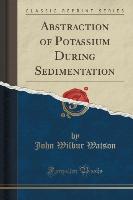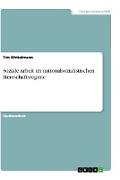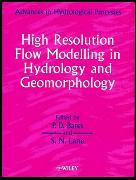- Start
- Abstraction of Potassium During Sedimentation (Classic Reprint)
Abstraction of Potassium During Sedimentation (Classic Reprint)
Angebote / Angebote:
Excerpt from Abstraction of Potassium During Sedimentation
Outline of Problem. - Primarily this paper seeks to determine whether the absorption of potassium during sedimentation is chemical or physical in nature, secondly, to determine whether the abstraction of potassium differs in kind or degree from that of other bases, and, finally, to determine whether the potassium is absorbed as flocculation takes place, that is when muddy water mingles with sea water. A study of these questions involves, of course, minor ones which will be taken up as they are reached.
Previous Work by Other Investigators. - That certain salts are removed from solution as they percolate through soils, has been known for many years. Sand filters for purification of sea water and impure drinking water have been used since Aristotle's time, and the removal of salts from sea water by percolation through sand or earth filters was practiced in Bacon's day (l). Steven Hales in 1739 found that the first portion of sea water passed through stone cisterns was pure (1). A list of other investigators who worked along the same line includes, Berzelius, Matteucie, Humphry Davy in 1813, Gazzeri in 1819, Lambuschini in 1830, Browner in 1836, Huxtable in 1848, Bernays in 1849, and Thompson and Way in 1850.
Berzelius filtered salt solutions through sand and found that the salt content was more or less removed, Matteucie found that the concentration of the salt in the solution became successively smaller upon being passed through successive filters (1).
Liebig found that aqueous ammonia passed through a clay filter lost its odor, and this result was verified by Thompson and Huxtable. Way in 1850 showed that soils likewise absorbed potassium, sodium, calcium, and magnesium, not only from solutions of their hydrates, but also their salts of both strong and weak acids, the acid remaining in solution unabsorbed and combined with other bases leached from the soil (1), phosphoric acid, however, was absorbed. Way believed this absorption of bases to be total (1), but Voelcker showed that this was not the case with ammonia, while Peters demonstrated the same to be true with potassium (2). Thus first crept in the idea of distribution, or the partition of a soluble substance between solid and liquid, by which a fraction is always left in solution. Many other investigators who worked on various phases of the problem of absorption of soluble material by soils, are mentioned in Bull. 52. Bureau of Soils, U. S. Dept. of Agriculture, 1908. pp. 13-26.
About the Publisher
Forgotten Books publishes hundreds of thousands of rare and classic books. Find more at www.forgottenbooks.com
This book is a reproduction of an important historical work. Forgotten Books uses state-of-the-art technology to digitally reconstruct the work, preserving the original format whilst repairing imperfections present in the aged copy. In rare cases, an imperfection in the original, such as a blemish or missing page, may be replicated in our edition. We do, however, repair the vast majority of imperfections successfully, any imperfections that remain are intentionally left to preserve the state of such historical works.
Folgt in ca. 5 Arbeitstagen




